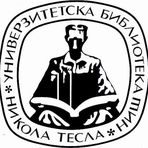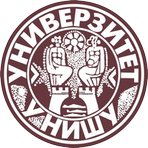Title
Kreiranje ekonomske politike Republike Srbije u savremenim uslovima
Creator
Milošević, Danijel, 1989-
CONOR:
93436425
Copyright date
2024
Object Links
Select license
Autorstvo-Nekomercijalno-Bez prerade 3.0 Srbija (CC BY-NC-ND 3.0)
License description
Dozvoljavate samo preuzimanje i distribuciju dela, ako/dok se pravilno naznačava ime autora, bez ikakvih promena dela i bez prava komercijalnog korišćenja dela. Ova licenca je najstroža CC licenca. Osnovni opis Licence: http://creativecommons.org/licenses/by-nc-nd/3.0/rs/deed.sr_LATN. Sadržaj ugovora u celini: http://creativecommons.org/licenses/by-nc-nd/3.0/rs/legalcode.sr-Latn
Language
Serbian
Cobiss-ID
Theses Type
Doktorska disertacija
description
Datum odbrane: 30.12.2024.
Other responsibilities
Academic Expertise
Društveno-humanističke nauke
University
Univerzitet u Nišu
Faculty
Ekonomski fakultet
Group
Katedra za nacionalnu ekonomiju i finansije
Alternative title
The making of the economic policy of the republic of Serbija in contemporary conditions
Publisher
[D. M. Milošević]
Format
247 listova
description
Biografija autora: list 244.
Bibliografija: list. 230-243.
description
Economic development and economic policy
Abstract (en)
Economic policy is an instrument for achieving the goals of the economic development of one country, therefore it is of great significance to understand economic policy models and the consequences of each measure, in order to properly steer the growth. Before all, we will mention the most important economic policy models from the twentieth century. In this section we will emphasize the connection between those models and the environments in which they were created. The macroeconomic environment is one of primary factors that must be considered when making the economic policy, as it can determine the outcome of every taken measure. With this in mind, we have the fact that some of the most acknowledged theories of the twentieth century are suggesting opposite measures. The explanation is that they were created in different macroeconomic environments. We will go through external and internal factors of macroeconomic environment and the channels through which they can intensify or cancel the effects of taken economic policy measures.
In the broadest sense, macroeconomic environment can be defined by the level of development of the country, or whether we speak about the developed or developing country, and it is possible to distinct models suitable for the first and the second. As they are on different steps of the development path and as their priorities are quite different, it is most often senseless to conduct the same measures in both.
Having in mind the necessity of precisely adjusting the economic policy to the actual conditions, we will create an overview of the macroeconomic variables in the Republic of Serbia during the second half of the twentieth century. We will, as well, follow the development of the economic system and the steering of the economic policy.
In the end, we will statistically calculate the influence that particular economic policy measures have on the results, based on the dataset from the period 2007-2022 in the Republic of Serbia. The economic policy measures are represented by public spending, interest rates and exchange rates, and the results are represented by the inflation rate, export and the index of industrial production. The analysis was done by using descriptive statistics, Pearson coefficient, ADF test and ARDL model. The conclusion is that all the independent variables have partial influence on the dependent ones and that it is necessary to apply all the measures of the individual policies simultaneously and consistently in order to efficiently and effectively reach the goals that had been set previously.
Authors Key words
ekonomska politika, fiskalna politika, monetarna politika
Authors Key words
economic policy, fiscal policy, monetary policy
Classification
338(497.11)(043.3)
338:330.101.541(497.11)(043.3)
Subject
S180
Type
Tekst
Abstract (en)
Economic policy is an instrument for achieving the goals of the economic development of one country, therefore it is of great significance to understand economic policy models and the consequences of each measure, in order to properly steer the growth. Before all, we will mention the most important economic policy models from the twentieth century. In this section we will emphasize the connection between those models and the environments in which they were created. The macroeconomic environment is one of primary factors that must be considered when making the economic policy, as it can determine the outcome of every taken measure. With this in mind, we have the fact that some of the most acknowledged theories of the twentieth century are suggesting opposite measures. The explanation is that they were created in different macroeconomic environments. We will go through external and internal factors of macroeconomic environment and the channels through which they can intensify or cancel the effects of taken economic policy measures.
In the broadest sense, macroeconomic environment can be defined by the level of development of the country, or whether we speak about the developed or developing country, and it is possible to distinct models suitable for the first and the second. As they are on different steps of the development path and as their priorities are quite different, it is most often senseless to conduct the same measures in both.
Having in mind the necessity of precisely adjusting the economic policy to the actual conditions, we will create an overview of the macroeconomic variables in the Republic of Serbia during the second half of the twentieth century. We will, as well, follow the development of the economic system and the steering of the economic policy.
In the end, we will statistically calculate the influence that particular economic policy measures have on the results, based on the dataset from the period 2007-2022 in the Republic of Serbia. The economic policy measures are represented by public spending, interest rates and exchange rates, and the results are represented by the inflation rate, export and the index of industrial production. The analysis was done by using descriptive statistics, Pearson coefficient, ADF test and ARDL model. The conclusion is that all the independent variables have partial influence on the dependent ones and that it is necessary to apply all the measures of the individual policies simultaneously and consistently in order to efficiently and effectively reach the goals that had been set previously.
“Data exchange” service offers individual users metadata transfer in several different formats. Citation formats are offered for transfers in texts as for the transfer into internet pages. Citation formats include permanent links that guarantee access to cited sources. For use are commonly structured metadata schemes : Dublin Core xml and ETUB-MS xml, local adaptation of international ETD-MS scheme intended for use in academic documents.


